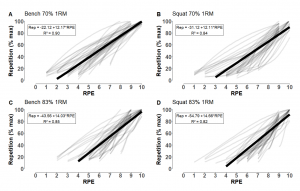Proof we should exercise by feel instead of a designed plan

I remember reading the insane story of a seemingly unheard of runner from Calgary named Trevor Hofbauer running a 2:09 marathon a couple of years ago, simultaneously becoming only the second ever Canadian to run a marathon under 2:10 AND qualifying for the Tokyo Olympics.
The crazy part of the story is not that he came out of nowhere to become Canada’s next distance running star. The crazy part is that he ran that marathon completely ‘by feel’. (click here to read just how insane this feat was).
Running is one of the most data driven sports out there. Competitive runners check their GPS watch on average a few times per kilometer. That means they check it over 100 times in a marathon race.
Hofbauer ran that race, the second fastest ever by a Canadian, without wearing a watch at all.
When asked about it, the laid back runner simply said “many of my workouts were time and effort based, so I did not feel like I needed a watch today”.
Time and effort based. Hmmmm.
I have done a fair bit of personal training since University and workout regularly on my own. Being a data and numbers driven guy, I typically have a very particular goal weight and specific number of repetitions I want to reach for each set.
If I don’t get that number I feel like I haven’t put in my best effort.
After reading the Hofbauer story I’ve always wondered if this is entirely the wrong approach.
There have now been a series of research papers that have convinced me that our traditional approach to strength training may in fact be wrong.
Stick with me for a minute here as I explain.
Over the past 10 years there has been an onslaught of studies proving that to gain strength it doesn’t actually really matter how much weight you use (light or heavy). What matters is that you take it to near failure (meaning you can’t do many more repetitions of the given weight).
The first group to publish on this was lead by Stu Philips out of McMaster University. We even wrote a blog about it (one of our first). I distinctly remember talking the results over with Dave as I simply couldn’t believe it.
Neither could gym meatheads worldwide. The amount of backlash that the research got was PHENOMENAL! Try telling a bunch of gym rats that use super heavy weights for 6-8 reps, that what they have been doing for the past 20 years is no different then if they chose a light weight and did 20 repetitions, provided both styles were performed to near failure.
Terms like ‘fraud’ and ‘bad research’ were bantied about.
But then the results got repeated. And repeated. And again. Over and over. So what seems to really matter when trying to gain strength isn’t necessarily the amount of weight you lift, but the effort you put in (provided it is near maximal).
This had HUGE implications. There are a lot of people out there that just don’t like lifting really heavy weights. They feel more comfortable with lighter weights, feel that their technique is better, and their risk of injury is lower. Most importantly, they ENJOY THEMSELVES more making them more likely to actually workout.
I would place this finding up there with the most important strength training research published in the past quarter century. It was that eye opening.
But I always wondered……how do you pre-determine near maximal effort?
We need an example that is close to home.
Let’s use Dave’s monstrous calves.
Dave’s calves are as big as his quads. His legs are the equivalent of Popeye’s arms….normal leg, gigantic calves.
My calves are fairly normal…..maybe even skinny.
Let’s say we were both being trained by Andrew, the owner of Evolution Fitness in our facility (who is one of the best trainers I have ever met by the way). How in the world would Andrew be able to design a specific program for both of our calves, that is close to max effort to ensure maximal strength gains, and know beforehand exactly how many repetitions each of us needs to do?
I’ll answer that……he couldn’t possibly know!
There are so many variables…..how each of felt that day, how much strength we have in that muscle group. Maybe Dave played squash the night before or I did a sprint workout and we still have DOMS in our calves. A million things come in that would never ensure that an arbitrary number like 10 or 12 repetitions is near maximal for us.
I’ve come to realize a lot of strength programs based on repetitions are suboptimal.
And then a new article just got published that finally scratched my 2 year old itch.
This study looked at ‘subjective perception’ of how many repetitions you can do. Essentially, they chose two lifts (the bench press and the squat) and had people complete sets at 70% of their one rep max, and at 83% of their one rep max to represent a lighter weight set, and a heavier set. After each repetition they simply asked folks to rate subjective perception of effort on a scale of 0-10.
But how in the world does this help answer my question on strength training?
You see, if someone’s effort score (RPE) can predict how close they are to failure accurately, then you can terminate your set based on that score instead of a predetermined number of repetitions. If it worked for both weights, even better as it provides a more accurate way to take someone close to failure using both light and heavy weights!

That thick line essentially shows a very high correlation between RPE ratings and failure proximity. They found that an increase in RPE of one point, corresponds to an 11.4% approach towards failure in the lighter weight sets and a 14% approach towards failure in the heavier weight set.
To be more practical, here is the single two items I will remember from the paper:
- An RPE score of 8, corresponds to reaching 70% of task failure regardless of which exercise they used, and whether it is heavy or light.
- An RPE score of 9, corresponds to reaching 80% of task failure regardless of which exercise they used , and whether it is heavy or light.
These numbers were the same, despite the fact that to reach failure, the lighter weight required nearly twice the number of repetitions as the heavy weight. This is great news as it means the results are predictable across a wide dispersion of weights used in a workout. LOVELY!
So what does this mean?
Next time you workout, try an effort score instead of a certain number of repetitions. A scale of 0-10 is cheap (free), easy to use, and is now shown to be very accurate for how close to failure you are. It also better accounts for the differences in Dave and my calves. I’ll explain:
Dave, being self conscious of his huge calves is erroneously convinced that he wants to use a super light weight but still keep strong calves for squash. I on the other hand want to beef up my skinny legs so choose a super heavy weight and go a more traditional route of using heavy weights and lower repetitions.
We now know through validated research that both approaches will have a similar effect on strength gains provided they are taken close to failure.
Instead of trying to predetermine how many repetitions is best and what exact weights to use, Andrew our strength coach now knows we just need to go to a 9/10 on perceived effort. This way we will both hit 80% of our task failure (maximum number of repetitions we could possibly do) and both will have similar gains.
One other really cool finding in this paper is they had the participants rate their level of enjoyment after each type of workout (heavy and light). Turns out of the 20 subjects, it was split 50/50 right down the middle. This shows about half of weight lifters enjoy lighter weights and half enjoy heavy. We now have a glorious guide to ensure we can maximize strength in both groups, and keep everyone loving their workouts.
